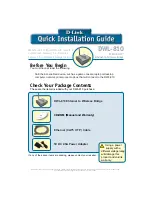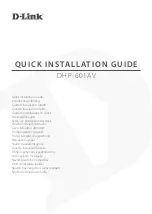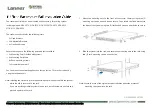
Riverstone Networks RS 8000/8600 Switch Router Getting Started Guide 2-33
Introduction
Hardware Overview
The 1000Base-T line card uses the LEDs described in
Table 2-27
.
MPLS Gigabit Ethernet GBIC Line Card
Figure 2-20
shows the front panel of the 2-port MPLS activated Gigabit Interface Converter (GBIC) line card.
Table 2-27 LED description for 1000Base-T line card
LED
Description
Offline
When lit, this amber LED on the left side of the line card indicates that
the line card is offline (powered off) and is ready for hot swap.
The Offline LED also is lit briefly during a reboot or reset of the RS
and goes out as soon as the Control Module discovers and properly
initializes the line card.
Online
When lit, this green LED indicates that the line card is online and is
ready to receive, process, and send packets if configured to do so.
Per-port Link
Green
– indicates that the port hardware detects a cable plugged into
the port and a good link is established
Red (intermittent)
– indicates that the port received an error during
operation
Red (solid)
– indicates that the port hardware detects a cable plugged
into the port, however, a bad link is established
Off
– indicates that no link from the port exists
Per-port Rx
Green
– indicates when the port’s transceiver receives packets
Amber
– indicates when the port’s transceiver receives flow-control
packets
Per-port Tx
Green
– indicates when the port’s transceiver transmits packets
Amber
– indicates when the port’s transceiver transmits flow-control
packets
Master
Amber
– indicates that the port is configured as the timing master
during auto-negotiation
Off
– indicates when the port is configured as the timing slave during
auto-negotiation
Quality
Off
– indicates that either auto-negotiation is in progress or the local
receiver status is not OK
Green
– indicates that either auto-negotiation is complete and is trying
to establish a link or a link is established
Fast Blink
– indicates a low SNR and close to data error
Slow Blink
– indicates detection of receive bit error
















































